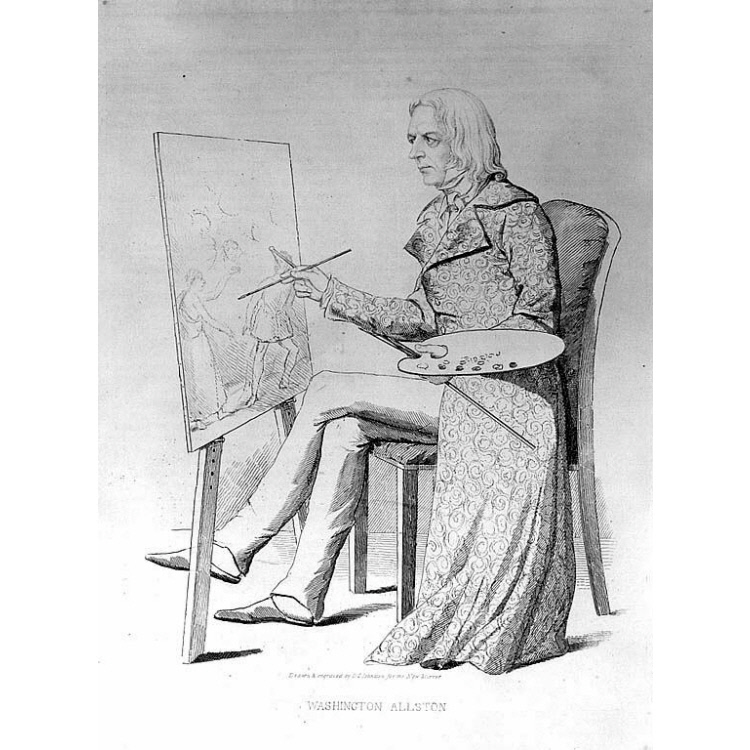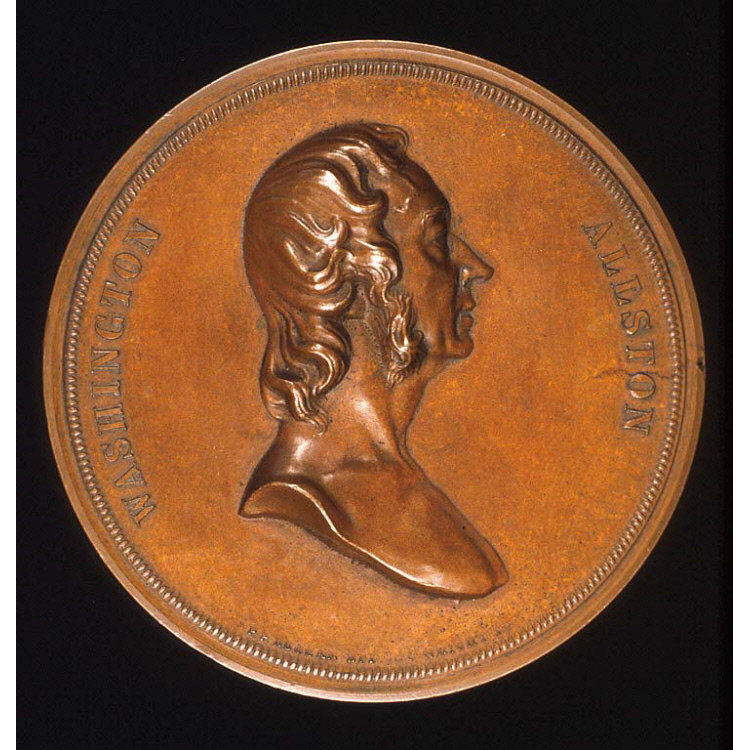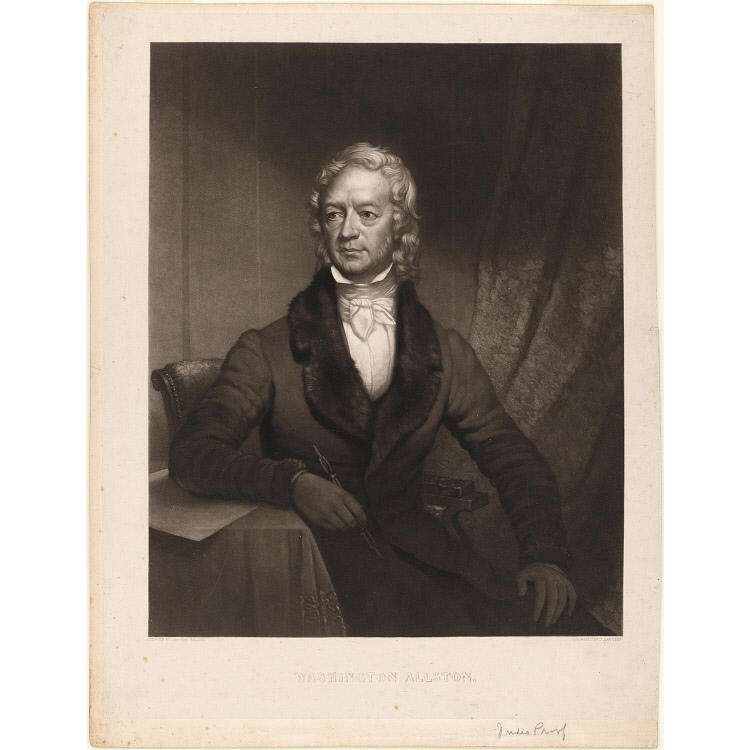Washington Allston
William Dunlap says of Washington Allston that he was "number one" in the catalogue of American painters or at least only second to his great master and precursor, Benjamin West. Dunlap goes on to say of the relationship between West and Allston, "the mantle of Elijah has fallen upon the shoulders of Elisha."
Possessed of unusual charm of mien and manner, Allston's influence as a person as well as a painter was felt in cultural circles in the first half of the nineteenth century. Something of the impact of the man is reflected in contemporaries' tributes. Horatio Greenough, the sculptor, counted himself among those "who owed to Allston the birth of their souls." And some years after his death, Longfellow wrote, "One man may sweeten a whole town. I never pass through Cambridgeport without thinking of Allston. His memory is the quince in the drawer, and perfumes the atmosphere."
Allston was educated in a school in his native Charleston, prepared for college at Newport, and went to Harvard, where he graduated with honors and was the class poet. After leaving college, he sold his share of the family property in order to finance his study abroad. In 1801 he sailed for England; from 1804 to 1808 he was in Italy, mostly in Rome. Here he first met Coleridge, who became a life-long friend. During his second stay in England and after the death of his first wife, Allston, like his friend Coleridge, joined the Episcopal church. In 1818 he was elected honorary member of the American Academy of Fine Arts and in the same year he returned to the United States, to live the rest of his life in Boston, Cambridge, and Cambridgeport. In 1827 his first exhibition was held at the Boston Athenaeum. In 1830 he married the sister of the poet Richard H. Dana and at his death in 1843 he was buried in the Dana vault in Cambridge.
During most of his career Allston wrote poetry and other literature; his Lectures on Art and collected aphorisms remain important documents of the time. Writing, and his active involvement with poet friends, perhaps give a clue to the attraction he felt for literary subjects evoking strong feelings.
Jane Dillenberger and Joshua C. Taylor The Hand and the Spirit: Religious Art in America 1700–1900 (Berkeley, Cal.: University Art Museum, 1972





